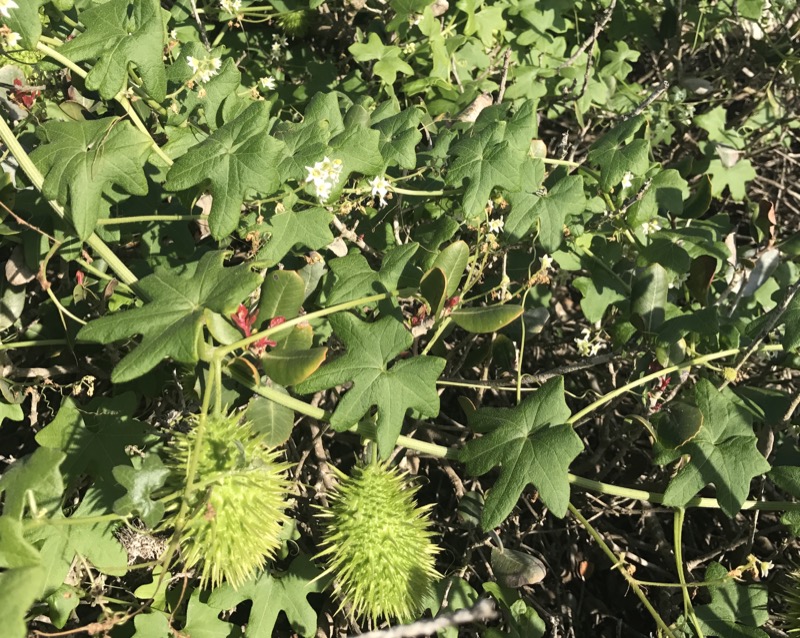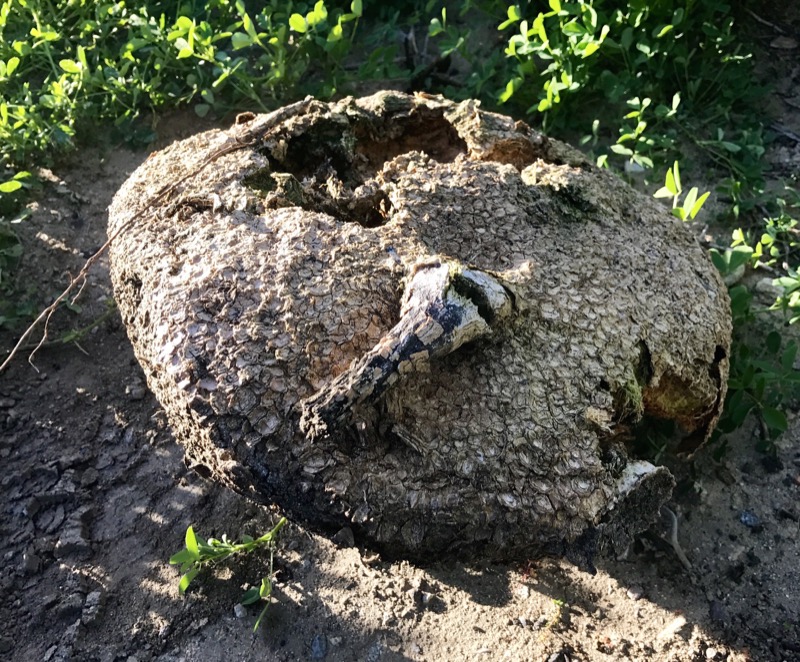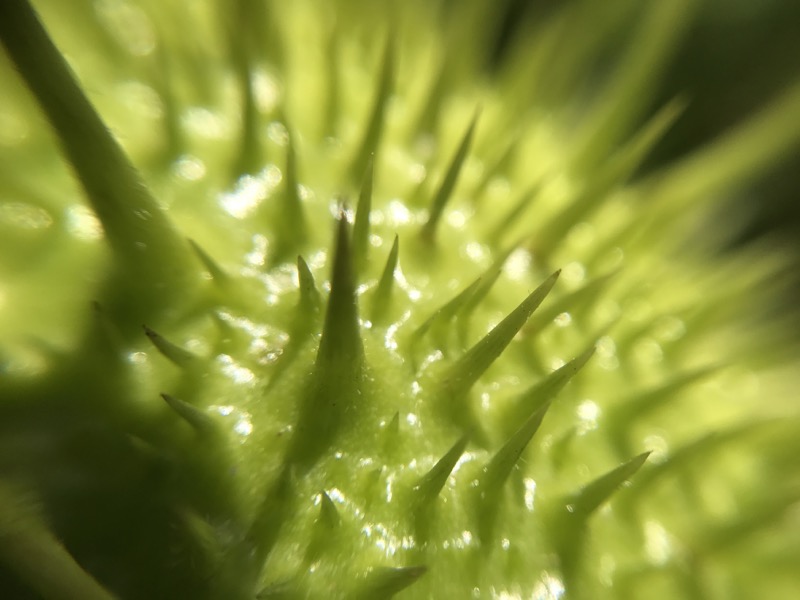
As you are out exploring Cabrillo National Monument, you might notice a vine canopying across the coastal sage scrub with some unique dangling fruit. This is Marah macrocarpa, also known as the Wild Cucumber or Cucumonga Manroot. The Wild Cucumber is a perennial herb or vine that is native to Southern California and Baja California. It has small white flowers and fruit that resemble a spiky ball. The Wild Cucumber blooms in late winter and is noticeable by its lime green vines wiring through the coastal sage scrub. These vines can climb to a length of up to 20 feet during the wet season and have a curled effect to attach to nearby vegetation. The vines emerge from a large, hard tuberous root that can extend several meters and weigh over 200 pounds. One manroot found by Rancho Santa Ana Bontanic Garden was reported to weigh 467 pounds after being removed from the soil! When you come across a Wild Cucumber, trace the vines back to the root and try to estimate how large its manroot may be.

For the Wild Cucumber, both the flowers and fruit have adapted significantly to ensure its survive for the next year. The Wild Cucumber flowers are monoecious, meaning that both male and female flowers can be found on the same plant. Male flowers tend to be open clusters, whereas the swollen base distinguishes female flowers. Being monoecious, the Wild Cucumber can easily be self-fertilized for the next generation of Wild Cucumbers. As you take a closer look at these lovely white flowers, watch out for the fruit that can be a bit vicious at times. The Wild Cucumber fruit is typically bright green, ripening to yellow, spherical and covered in prickles of variable density and length. Their tough shell protects 4 or more large, hard, and very smooth seeds within the fruit. The fruit swells until it ripens, finally rupturing, and releasing the seeds. These seeds will then sprout in the late winter. The initial shoot emerges from the seed and grows downward into the ground. The shoot will then split, one portion beginning to swell to form the tuber and the second part growing to the surface to become the vine.

Why do we see it at Cabrillo only part of the year?
The Wild Cucumber is found in arid climates amongst washes, scrubs, or open areas like Cabrillo National Monument. It has one of the most hairy shoots, stems, and leaves of all the manroot species making it well adapted to this climate. The “hair” allows for protection from the sun as well as collection of water. The Wild Cucumber is a drought deciduous species that blooms in late winter in response to the increased rainfall and typically enters a dormant state during the extended summer months where it dies back completely and may not be seen until the following year.
Does anyone eat the Wild Cucumber?
Its name can be deceiving because in fact most animals, including humans, do not eat any part of the Wild Cucumber. The Wild Cucumber fruit has a bitter and distasteful taste even after ripening. However, because of its smell the manroot can be processed for a soap-like extract.
